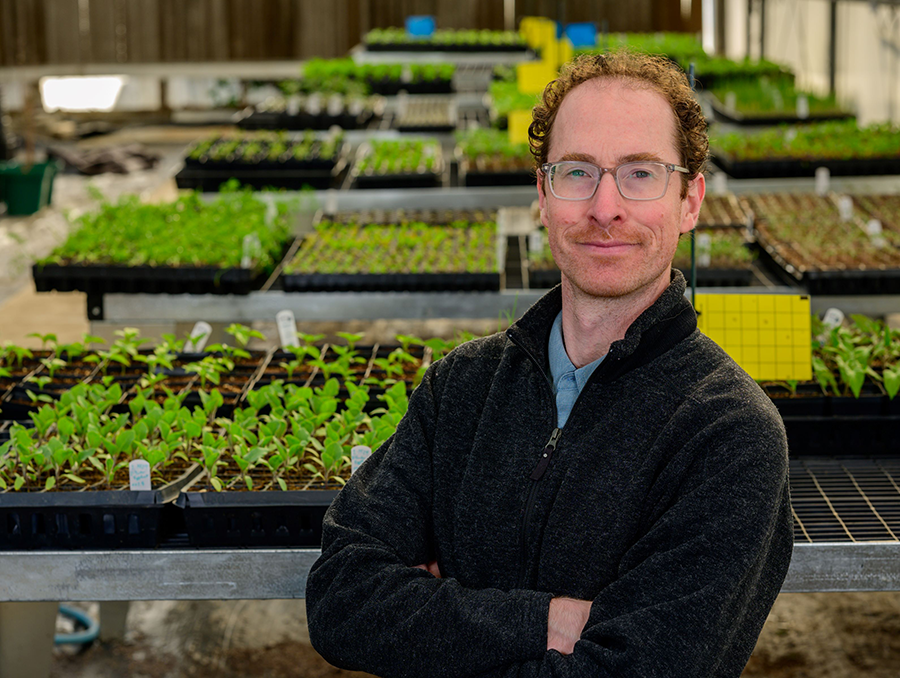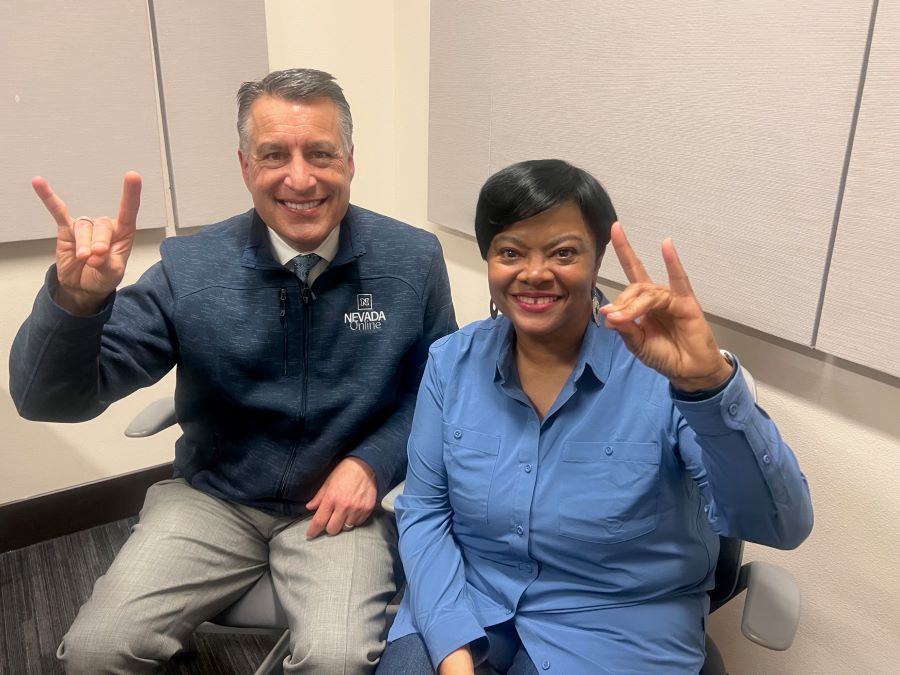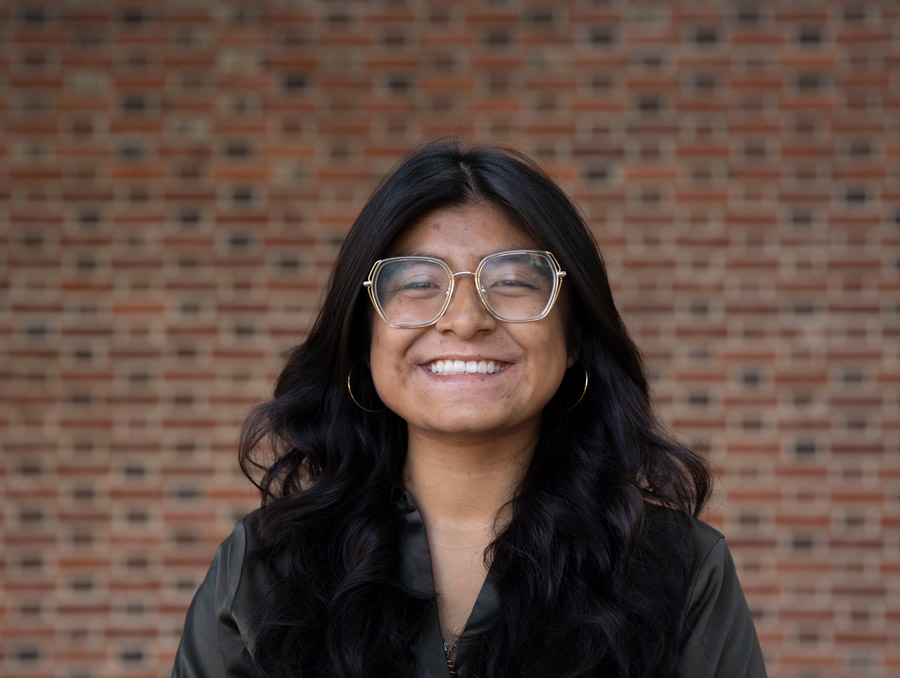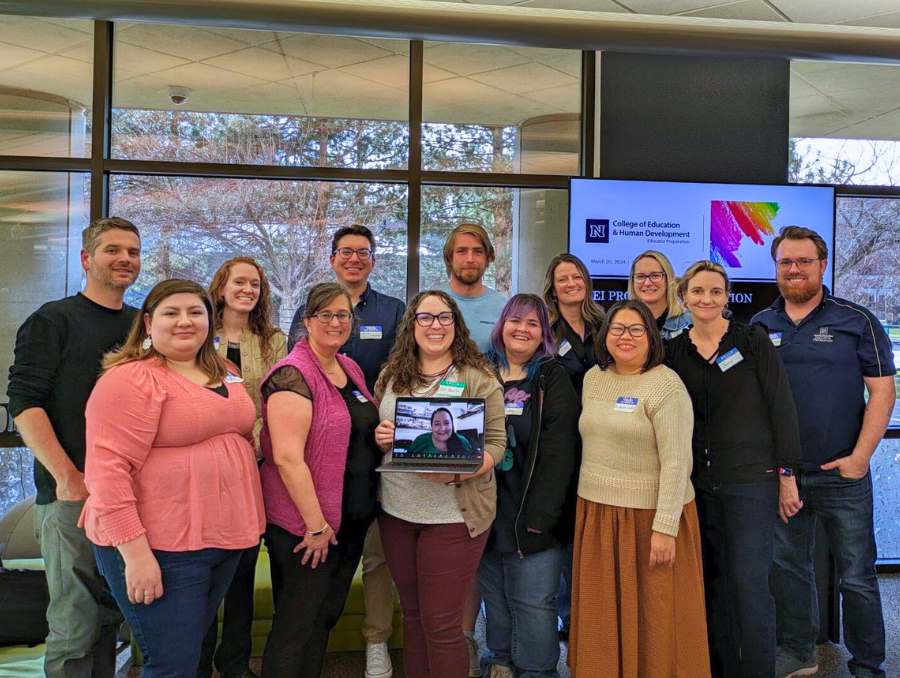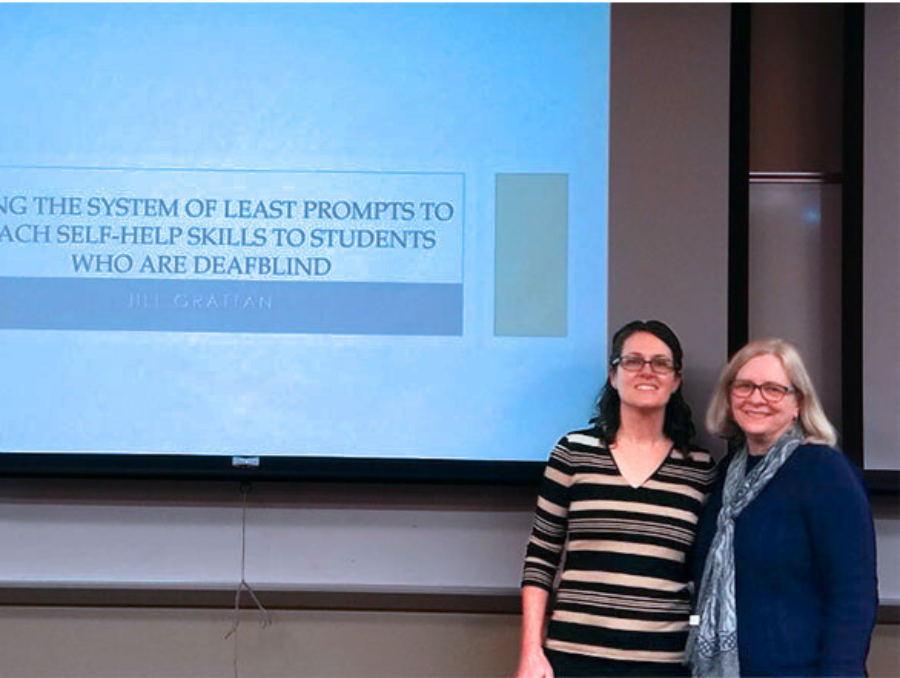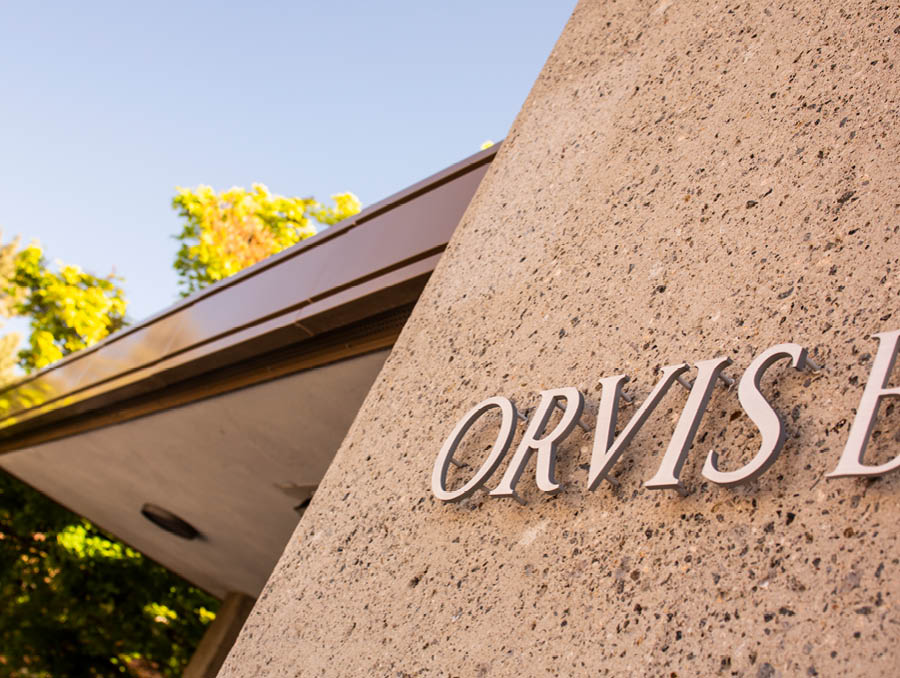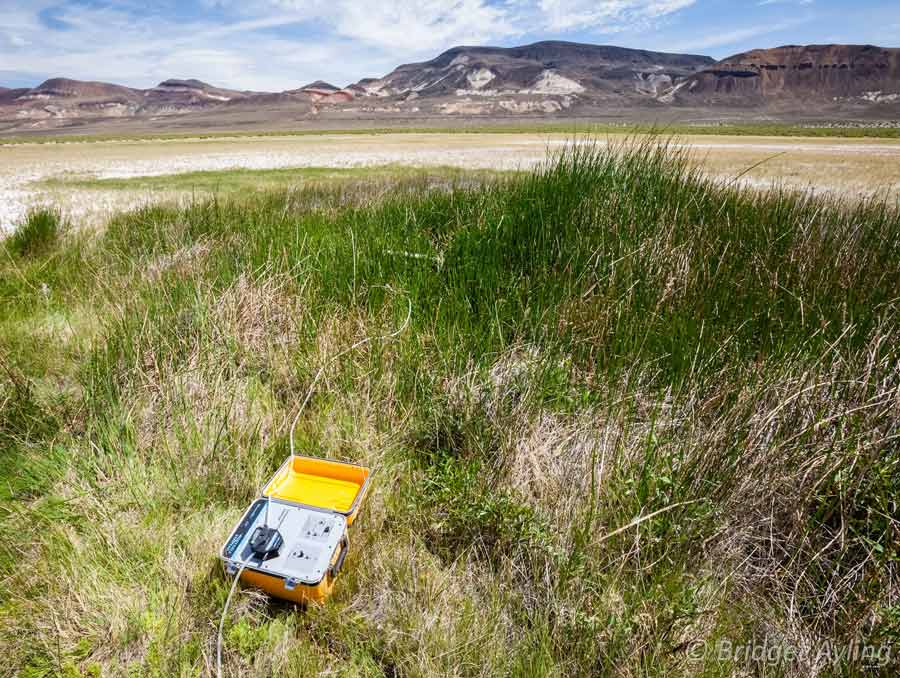From the moment Washoe County School Superintendent Heath Morrison met University of Nevada, Reno President Milt Glick, Morrison knew he had found a kindred spirit.
And it had nothing to do with Glick’s headwear.
Or maybe it did.
“One of the first individuals I met when I became Washoe County School Superintendent was Milt Glick,” Morrison told an audience of about 100 faculty, staff and administrators who gathered on Thursday afternoon in the Mathewson-IGT Knowledge Center to hear Morrison present his vision for northern Nevada’s K-12 schools over the next five years.
“And the first thing I thought was, ‘This guy has a cool hat,’” Morrison said with a smile, drawing a laugh from Glick and the audience, who know Glick is seldom seen without his trademark pull-string hat.
What Morrison saw in Glick in the summer of 2009, and continues to see today, he said, is a commitment to Nevada’s future. It is a future predicated on something more than increased budgetary investment by the state of Nevada or increased participation and engagement by the people of Nevada.
“Let’s talk about what we’re going to save, not what it’s going to cost,” Morrison explained. He urged those in the room to remember that “we can’t afford to be on the sidelines” and that the discussion of an educated populace and its place in Nevada “might very well be the most important conversation this state ever has.”
Morrison, along with Pedro Martinez, Washoe County’s deputy superintendent, moved briskly through an hour and half presentation and question-and-answer session that focused less on budget reductions – though the Washoe County School District has seen its budget decrease by $37 million – and more on what the future might hold for a school district that has decided it wants to be “great, not just good,” Morrison said.
“What I was enticed by with the Silver State and Washoe County School District was a school district that wanted to do things differently, and not just for the sake of being different,” Morrison said of his decision to leave the public school system in Montgomery County, Maryland, and come to Nevada.
He said that in addition to formulating a five-year strategic plan for his 94-school, 64,000-student school district (called “Envision Washoe County School District 2015 – Investing In Our Future” ), it was time for K-12 and its partners to realize what he called some “brutal facts.”
One of them concerned graduation. For the past several years, he said, Washoe County School District had been stuck at a 55- or 56-percent graduation rate. He said as school superintendent, attending all the high school graduations and shaking each newly minted graduate’s hand is one of the highlights of his year.
But the knowledge that only about half of the district’s seniors were graduating made the experience bittersweet, he said.
“Graduation is a wonderful time until you realize there are a lot of kids whose hands you aren’t shaking,” he said. “If we don’t intervene with passion, vigor and commitment, half the kids on every playground today (in elementary school) will never graduate.”
He said that in Washoe County, “That sense of urgency was not hard to find.” In the past year, by making graduation more accessible for more students with novel ideas such as offering for-credit courses before and after school and on weekends at high schools such as Reed High in Sparks, the school district has already seen its graduation rate improve to 63 percent.
Morrison noted that while 63 percent is promising, it still isn’t “great.” He pointed to several key numbers to illustrate why it is imperative that more students graduate:
Statewide, 50 percent of all high school seniors graduate;
220,000 out of the state’s 440,000 students never reach graduation;
There is an estimated $5.2 billion loss in income associated with those students who never graduate;
Nevada ranks No. 1 in the country for high school dropouts;
According to the Wall Street Journal, Nevada ranks No. 49 in per-pupil expenditures for public education.
“The brutal fact for all Nevadans is that these are all numbers that we must all be dedicated to changing,” Morrison said.
Morrison said one of the keys to the school district’s attempt to revamp its success was something the university campus has also grappled with in recent months as state-mandated budget cuts have accumulated.
“Just like you,” he said, “we had to figure out how to get better, and how to do more with less.”
Through successful initiatives such as School Improvement Grants (a process where demonstrated need by Washoe County schools has yielded federal funding to help improve outcomes), Morrison said 80 percent of the district’s schools improved in reading, and another 86 percent improved in math over the past year.
“And what I’m really proud of,” Morrison added, “is that every school … every school … improved in some way.”
Martinez said the gains have been tied to five-year targets developed by the district for each school.
“Every school has a clear definition of the targets, and of success,” Martinez said, adding that “baseline targets have been added for non-academic areas, as well.”
Morrison said he didn’t want to be “presumptive” in the expectation that every Washoe School District graduate should automatically go on to college. He did say, however, that the K-12 partnership with higher education was an “integral” part of a more prosperous Nevada, and to illustrate the point, said he views education in Nevada as an all-inclusive, “K through 20” framework.
Chris Cheney, dean of the College of Education, echoed Morrison’s sentiment.
“We form a cycle,” she said, noting that the grade-school students of Nevada “grow up” to be the students at the state’s universities, and that these many of these students “go on to become our teachers.”
“The school district and the College of Education pull in tandem,” Cheney said, noting the close collaboration that occurs on issues such as core curriculum standards, STEM areas (Science, Technology, Engineering and Mathematics), and graduate programs offered in her college, to name just a few.
“The school district and the university have always been bound by our students and our professional relationships,” she said.
Morrison said the value of good people, placed in the proper positions where success is attainable, has also helped fuel the district’s efforts.
“Let’s face it, we talk about what would be the magic for public education,” Morrison said. “It always boils down to good principals, good teachers and a good learning environment in the school that engages.”
Morrison said he specifically was looking to the individuals in the auditorium on Thursday to help the school district better connect with its families and communities. He said in the coming weeks the school district will make race one of its prime topics, and will encourage its personnel and schools, its students and families, its community and region, to engage in an honest, frank dialogue regarding race.
He said that by doing so, the school district will be producing better students who will be enlightened citizens – citizens poised to make positive contributions to their community once they have graduated.
As energized as he seemed to be, Morrison said he understood the tenor of the times in Nevada. He acknowledged the state’s nation-leading unemployment and foreclosure figures.
Yet, he said, “We are all Nevadans, and there has never been a more important time to be Nevadans, together.” He said those in the room represented an important segment of Nevada’s population.
“None of us in this room signed up to be the hope-bringers for an entire state,” Morrison said. “But that’s the job we have in education right now.”
(Editor’s note: read the Washoe County School District’s strategic plan.)




